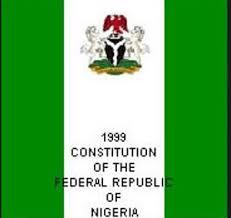PRESS RELEASE
FG Hosts Workshop on Gender Mainstreaming and GBV Success Stories Dissemination under TRIMING Project.
The Federal Government, through the Federal Ministry of Water Resources and Sanitation, in collaboration with the World Bank and other critical stakeholders, convened a Gender Mainstreaming and Gender-Based Violence (GBV) Success Stories Dissemination Workshop under the Transforming Irrigation Management in Nigeria (TRIMING) Project, with the theme: “From Tradition to Transformation, Led by Women”, today in Kano.
The Honourable Minister of Water Resources and Sanitation, Engr. Prof. Joseph Terlumun Utsev, who was represented by the Permanent Secretary, Mr. Richard Pheelangwah, in his keynote address emphasized that the TRIMING Project was designed to enhance irrigation systems and promote integrated water resource management, with gender and social safeguards as core components.
According to Prof. Utsev, the project has transformed women, youth, and vulnerable groups from being marginalized to becoming vital contributors in agriculture and water governance.
He highlighted the achievements of the project, including the development of GBV Action Plans across all schemes for risk mitigation and survivor support, women’s leadership in Water Users Associations (WUAs), enhancing inclusive decision-making, and the economic empowerment of women through active roles in irrigation management.
Prof. Utsev added that the extensive capacity-building on gender sensitivity and GBV prevention, the strengthening of local capacitie, including youth champions and gender desk officers, cultural norm shifts through media, dialogues, and storytelling in local languages, as well as alignment with global best practices and World Bank environmental and social standards, are additional achievements of the project.
The Minister thanked President Bola Ahmed Tinubu, the World Bank, and the Project Monitoring Unit for their support in driving TRIMING’s success. He urged the replication of its gender and GBV initiatives in other projects and emphasized that achieving a gender-equitable, GBV-free society requires ongoing commitment and collaboration.
Engr. Hauwa Sadique Mohammed, Deputy Director Irrigation, delivering the welcome address on behalf of the Permanent Secretary, Mr. Richard Pheelangwah, emphasized the workshop as a key milestone in advancing inclusivity, equity, and safety, particularly for women, girls, and vulnerable groups in the TRIMING Project. The Permanent Secretary highlighted that from inception, the project prioritized gender equality, GBV prevention, and social inclusion, with gender mainstreaming embedded across all stages to ensure equal opportunities and safe spaces.
Delivering a comprehensive overview of the project, the Project Coordinator, Engr. Ipinlaye Olaiya, emphasized the central role of gender mainstreaming across all components of the TRIMING Project, noting that the deliberate integration of gender perspectives was not only strategic but essential to the long-term sustainability and impact of the interventions.
Goodwill messages were delivered by the Managing Director of Hadejia Jama’are River Basin Development Authority, Engr. Rabiu Suleiman Yusuf, representative of the academia,Prof. Restituta Igube from the University of Abuja, and Commissioners from the Gombe State Ministry of Women Affairs, Asmau Mohammed Iganus as well as the representative of Kano State Ministry of Women Affairs, Children, and the Disabled. They all emphasized the significance of inclusivity, sustainability, and community ownership in gender-responsive water and agricultural development.
A key moment of the workshop was the presentation of badges to Women Leaders of Water Users Associations (WUAs) of Sokoto Rima River Basin Development Authority, Jigawa, Kano, Gombe and Zamfara States.
Signed
Mrs. Funmi Imuetinyan
Director Information and PR
25/06/2026
PRESS RELEASE
FG Hosts Workshop on Gender Mainstreaming and GBV Success Stories Dissemination under TRIMING Project.
The Federal Government, through the Federal Ministry of Water Resources and Sanitation, in collaboration with the World Bank and other critical stakeholders, convened a Gender Mainstreaming and Gender-Based Violence (GBV) Success Stories Dissemination Workshop under the Transforming Irrigation Management in Nigeria (TRIMING) Project, with the theme: “From Tradition to Transformation, Led by Women”, today in Kano.
The Honourable Minister of Water Resources and Sanitation, Engr. Prof. Joseph Terlumun Utsev, who was represented by the Permanent Secretary, Mr. Richard Pheelangwah, in his keynote address emphasized that the TRIMING Project was designed to enhance irrigation systems and promote integrated water resource management, with gender and social safeguards as core components.
According to Prof. Utsev, the project has transformed women, youth, and vulnerable groups from being marginalized to becoming vital contributors in agriculture and water governance.
He highlighted the achievements of the project, including the development of GBV Action Plans across all schemes for risk mitigation and survivor support, women’s leadership in Water Users Associations (WUAs), enhancing inclusive decision-making, and the economic empowerment of women through active roles in irrigation management.
Prof. Utsev added that the extensive capacity-building on gender sensitivity and GBV prevention, the strengthening of local capacitie, including youth champions and gender desk officers, cultural norm shifts through media, dialogues, and storytelling in local languages, as well as alignment with global best practices and World Bank environmental and social standards, are additional achievements of the project.
The Minister thanked President Bola Ahmed Tinubu, the World Bank, and the Project Monitoring Unit for their support in driving TRIMING’s success. He urged the replication of its gender and GBV initiatives in other projects and emphasized that achieving a gender-equitable, GBV-free society requires ongoing commitment and collaboration.
Engr. Hauwa Sadique Mohammed, Deputy Director Irrigation, delivering the welcome address on behalf of the Permanent Secretary, Mr. Richard Pheelangwah, emphasized the workshop as a key milestone in advancing inclusivity, equity, and safety, particularly for women, girls, and vulnerable groups in the TRIMING Project. The Permanent Secretary highlighted that from inception, the project prioritized gender equality, GBV prevention, and social inclusion, with gender mainstreaming embedded across all stages to ensure equal opportunities and safe spaces.
Delivering a comprehensive overview of the project, the Project Coordinator, Engr. Ipinlaye Olaiya, emphasized the central role of gender mainstreaming across all components of the TRIMING Project, noting that the deliberate integration of gender perspectives was not only strategic but essential to the long-term sustainability and impact of the interventions.
Goodwill messages were delivered by the Managing Director of Hadejia Jama’are River Basin Development Authority, Engr. Rabiu Suleiman Yusuf, representative of the academia,Prof. Restituta Igube from the University of Abuja, and Commissioners from the Gombe State Ministry of Women Affairs, Asmau Mohammed Iganus as well as the representative of Kano State Ministry of Women Affairs, Children, and the Disabled. They all emphasized the significance of inclusivity, sustainability, and community ownership in gender-responsive water and agricultural development.
A key moment of the workshop was the presentation of badges to Women Leaders of Water Users Associations (WUAs) of Sokoto Rima River Basin Development Authority, Jigawa, Kano, Gombe and Zamfara States.
Signed
Mrs. Funmi Imuetinyan
Director Information and PR
25/06/2026







